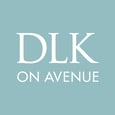Growing old gracefully or fighting it every step of the way: There’s a product for that.
BEAUTY BASICS Collagen and elastin...why should you care?
Think of collagen (which lives in the dermis, the deeper part of the skin) as the stuffing in a mattress and elastin as the springs. A new mattress is young and taut (see: your eight-year-old niece’s face). When damage occurs, the mattress begins to sag and deflate. What’s the best way to get your bounce back? Use retinol, which is one of the few ingredients that can actually help build collagen. Laser treatments and chemical exfoliants, like alpha-hydroxy acids, also help get skin reminiscing about the good old days.
DERM DATE
Some things are best left to the professionals.
LASER QUEST
Traditional resurfacing lasers are great at targeting wrinkles, but downtime can last three months. At DLK on Avenue, Dr. Lisa Kellett’s Laser Peel (from $500) uses modified ProFractional and ResurFX lasers that operate at a lower frequency, reducing recovery time to only about two or three days—the same as a typical chemical peel. “Instead of doing a traditional skin peel with acids, we use the laser, which heats the skin,” says the Toronto-based dermatologist. Though the treatments have comparable downtimes, the heat from the laser peel helps to produce collagen—one of the building blocks of flawless-looking skin.
FREEZE-FRAME
Even as effective new professional and topical anti-aging treatments come to market, Botox and fillers are still going strong. “They are the gold standard in non-invasive treatments,” says Dr. Fredric Brandt, a New York-based dermatologist, of their enduring popularity, not least because they can be used to restore volume and structure to the face. Docs in the know are using Botox to contour the face by injecting it into the masseter muscle, which relaxes a tense jawline and emphasizes cheekbones. London-based Dr. Michael Prager is anti-“big pillow cheeks and expressionless faces” and a specialist when it comes to using Botox in the lower half of the face because if this area sags, it ages the face more than any forehead wrinkle. “Injecting Botox into the jaw will stop the muscle movement that pulls cheeks down,” he says. Prager also doesn’t advocate the one-size-fits-all approach to Botox: “When it’s not done right, you look different, not necessarily younger.”
HOMEWARD BOUND
Professional anti-aging treatments are not substitutes for daily preventive care. Dr. Macrene Alexiades, a dermatologist based in New York, likens professional laser treatments to going to the dentist to get your teeth deep-cleaned—for good-looking teeth, you still need to brush them every day. “I tell all my patients that lasers are not going to work on their own,” she says. “Post-procedure, you need to feed the skin in order to maximize the results. If you stimulate stem cells with a treatment but they don’t have the raw materials for synthesizing collagen, you won’t see results.” Alexiades recommends the daily use of an anti-aging product that contains amino acids, collagen cofactors and a high concentration of organic peptides. “I believe that using a good anti-aging product every day, twice a day, at home is superior to doing procedures every so often,” she says. Duly noted.
